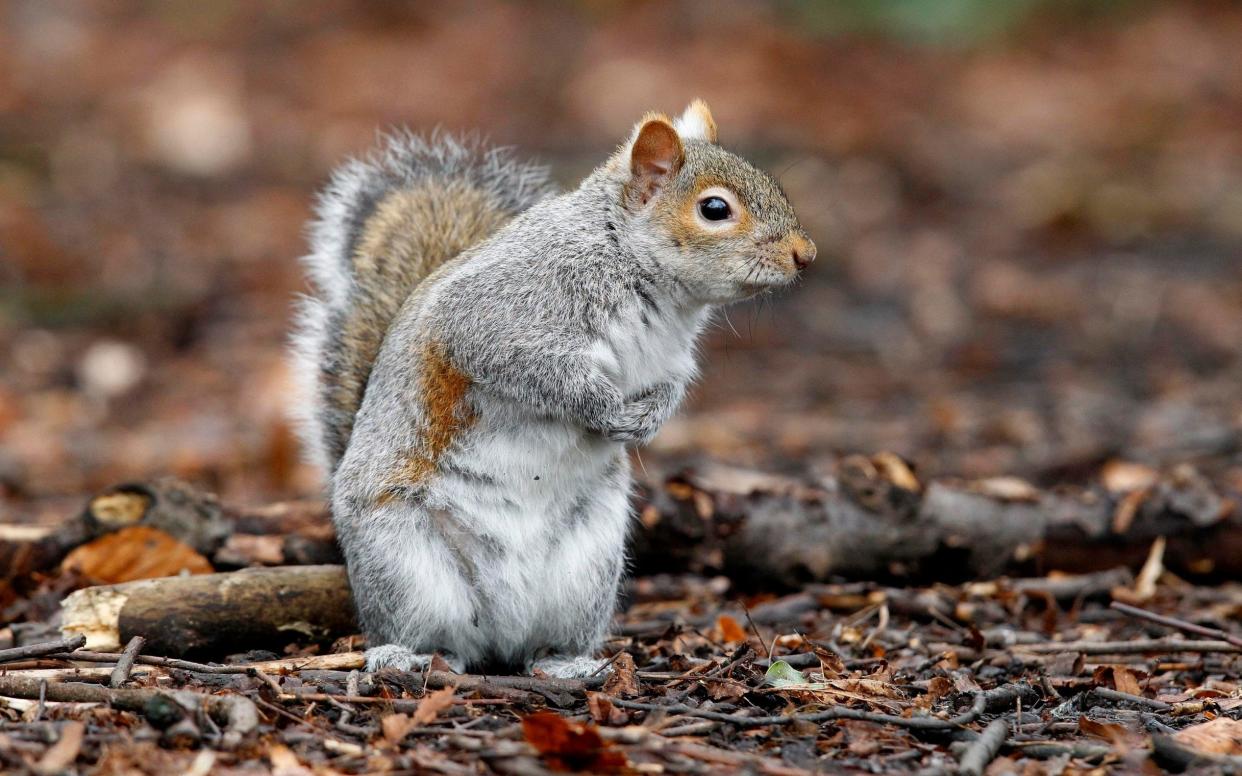Grey squirrel is on the menu, as diners turn to the wild meat to help boost the reds

They are often an unwanted visitor to gardens, thanks to their reputation for raiding bird feeders and stripping trees of bark.
But grey squirrels are finding a warmer welcome to the dining table, as chefs and retailers report increasing interest in eating the furry rodent.
The rise in popularity is believed to stem from diners’ growing interest in sustainable, cruelty-free food, which sees them turn to “wild meat” from animals which would have been culled anyway.
The grey squirrel is one such animal, classed as an invasive pest which has few predators in the wild and out competes the endangered red squirrel.
To reduce waste, chefs are using the carcasses of culled squirrels in pancakes, croquettes and even lasagne.
Ivan Tisdall-Downes, who runs the restaurant Native in London’s Borough Market, makes a squirrel ragu by slow cooking the meat from its hind legs. His wild boar supplier happens to help with grey squirrel culling, and sends the carcasses down to the restaurant.

He said that customers are increasingly interested in eating cruelty-free wild meat and minimising their carbon footprint, which makes squirrel a popular choice.
He told The Sunday Telegraph: “Squirrel is one of the most sustainable proteins you can cook really. It is almost exactly the same in taste as rabbit.
“It's tasty, it's not as gamey as rabbit, it's nice white meat. It's good to cook down slowly and make stews from and ragus for lasagne.
"It's very good for you, it's quite lean.
"There are 5 million gray squirrels and only about 150,000 red squirrels at the moment, a record low. Because there aren't really any predators left for the gray squirrels the population is booming and they are taking over the red squirrel habitat.
"I think sustainable eating is becoming more popular now. More and more people are more conscious of their carbon footprint and the damaging additives that get put in their food. I grew up in South East London and hadn't heard of wild food. Now wild food is everywhere.”
Kevin Tickle, who runs Michelin-starred restaurant The Forest Side in Cumbria, uses the fact he is in a red squirrel conservation area to his advantage.
He has had a “critter fritter”, a grey squirrel croquette, on his acclaimed tasting menu since the restaurant opened in 2016.

He told The Telegraph: “They're a pest, we are stuck bang in the middle of a red squirrel conservation area.
“I also enjoy shooting, I shoot quite a lot of greys so it make sense to put it on the menu - if we shoot them we should cook with them.”
Mr Tickle said customers enjoy the unusual option, adding: “95 per cent of people go for it, it's on every menu. They find it quite exciting.”
Suppliers are also reporting that the meat is becoming more popular. Robert Gooch, director and owner of the Wild Meat company, said squirrel has risen in popularity over the past five year and is now their third biggest seller after venison and pheasant.
One squirrel, which feeds one, costs just under £5 on on the company’s website, with the best meat being found on the hind legs.
Mr Gooch said; "It's our third best seller at the moment. Consumers are very concerned about the stress that farmed animals go through in their lives so are more interested in wild meat.
“Eating meat from animals that are killed or culled anyway is sustainable otherwise it would be waste.
“Game meat is also very popular in the paleo diet.”

 Yahoo News
Yahoo News 
